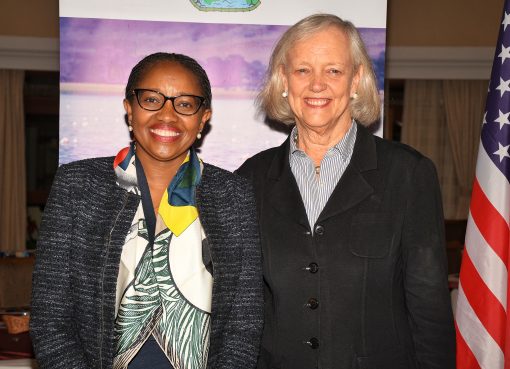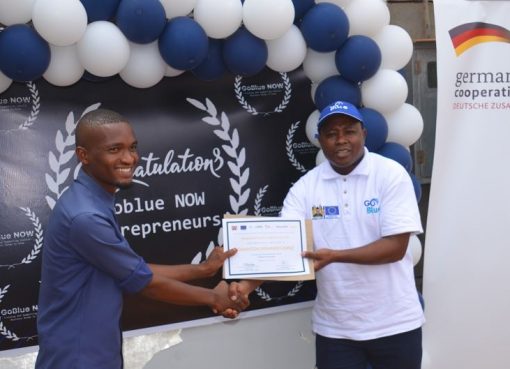A talented man has developed a passion for showcasing the strength, resilience, and invaluable contributions of African women through his artistic impression.
Willis Otieno, 47, the founder of Takataka Creative Arts in Kisumu County, says his artwork seeks to portray the talent of the African woman as the pillar of the family.
“I tend to draw generally, but I have a bias towards women, where around 80 per cent of the images portray African women in different spheres. I paint the African woman enjoying herself by dancing or singing,’’ he joyously said.
Nestled next to Nyaori Catholic Centre in the sprawling Nyalenda slums in Kisumu Central Sub-County, Otieno’s 4×3-metre art studio is from where one of the ardent voices championing this remarkable cause emanates.
According to Otieno, the focus is on African women’s emancipation as they suffer from the aftermath of the atrocities of the never-ending wars, where mostly men fight for power on the African continent. In most war-torn areas, he points out that the African woman or mother will never let her family down, irrespective of the circumstances.
“In some instances, when the men are fighting, the African women will tend to the family. When you see people migrating, you will see the woman tagging along with her children on her back and luggage on her head too,’’ he said.
Otieno derives his inspiration to tell the African woman’s story when he sees that in the Maasai culture, the women build houses, fetch firewood, and cook meals.
He vividly recalls that his artistic journey began as early as in nursery school. His drawings captivated his fellow pupils in Burumba Primary School, Busia County, where pupils used to accompany him back home to see some of his finished wall hangings.
“I come from a family of artists, with my elder brother being a very good one, though among us, I am the only one who has taken art as a full-time profession. My second brother is into performing arts, and the rest are into it just as a hobby,’’ offered the visual artist.
Born and bred in Busia, the highly skilled artist joined Kisumu-based Mwangaza Art School in 1997, where he sharpened his knowledge and skills for three years. Here, they were taught painting, drawing, and sculpting.
He ventured into an alternative medium like sand mosaic, and then in 2008, he diverted into chicken egg shells to make his work unique from that of other artists.
“The aspect that it is waste recycled to create the art I make has led to a lot of connections, opportunities, and interviews from the major television stations and newspapers in the country,’’ Otieno added during an exclusive interview with KNA recently.
Since lady luck came calling, the acrylic painter on canvas has exhibited his artwork locally and internationally in places like Kampala (Uganda), Dar es Salaam (Tanzania), and Kigali (Rwanda), as well as at UNESCO Headquarters in Paris, USA, Denmark, and Wales, among others. Further, through his skills in art, Otieno has been able to get opportunities and generate income, which helps him sustain his family.
“Talent pays,’’ he confirms, as he encourages that “those who are talented in the arts and other professions should not shy away from exploring and exploiting them.”
Otieno tends to sell his artwork at an affordable price because he sources his materials locally and the cost of production isn’t high. Notably, he advises that those who source from his workstation benefit more from the cheaper offers. His clientele base consists of individuals, hotels in Kisumu, and institutions like the Kisumu County government, where he has supplied several chicken egg-shell mosaics gifted to visiting dignitaries.
“Some of the dignitaries who have received my art pieces include former US President Barack Obama and Burundian President Evariste Ndayishimiye during the Madaraka Day event held in Kisumu and ambassadors,” he revealed.
In the Prime Arts Markets (high-end places in Nairobi and internationally), Otieno notes, it’s not easy to hold exhibitions’ because accessing the spaces is not cheap and the rates are very high, though the chances of selling when you have a good artwork are higher than in Kisumu.
The re-introduction of art into the school curriculum through the competency-based curriculum (CBC), he happily notes, is a good step in the right direction as it will help in nurturing the children’s talents.
To pass the baton on to budding artists, Otieno offers mentorship lessons daily and over the weekends to school-going children.
“I know of four people whom I have mentored practicing art full time and now earn from it. Similarly, primary and high school students and those who regularly come for consultations,’’ he said.
He explains that the name Takataka Treasure Arts is coined from the aspect of recycling waste and the artworks that he sells for thousands that are there for the treasure.
Enter Dero Arts, a community-based organisation (CBO), the brainchild of Otieno and like-minded artists like Nairobi-based Mito David and Julia Ekong, which was established a few months ago.
“We have just started incorporating other artists and people from relevant fields, such that we embark on art as an income-generating activity. As a CBO, we would also like to address issues like Mental Health Awareness, and Human Rights activities,” Otieno said.
Since its inception, the CBO has successfully organised its first exhibition held at the Kisumu Museum, where 20 per cent of the sold artworks were retained to support Mwangaza Art School activities to buy some art materials and assist the museum that hosted the exhibitions.
They are now focused on hosting an international exhibition in Kisumu and maybe going global in the future.
Otieno says that selling artwork in Kisumu is not easy because they participated in month-long exhibitions and ended up without realising a single sale. In addition, the working spaces for productions and displays, he observes, pose another challenge in the lake region.
“We have been able to explore opportunities from the county and national governments and corporate events. In this way, we benefit by showcasing our work at trade fairs and exhibitions. I had the privilege to attend the recent Utamaduni Day graced by the First Lady Rachel Ruto held at the Bomas of Kenya,’’ Otieno elaborated.
He urged both governments to invest in infrastructure to provide art studios for artists to practice and showcase what they can produce. Most of the artists operate individually from their houses or tiny spaces, which are inaccessible to buyers, tour guides, and the transport sector.
“In this way, we will work under one roof, undertake many things as a team, and easily market our artwork online by paying for the internet,’’ he emphasised.
“I am glad that people have started appreciating art in Kisumu. Most people tend to buy art as a luxury and not as a priority, like basic needs. It comes in as an afterthought and is bought from the remnants of their earnings,’’ Otieno observes.
Accessing loan credits for art business startups or boosts is another sticky issue since financial institutions require collateral, which most artists do not have. He, therefore, suggests that there should be some government funding for the artists, like the Women Empowerment Fund and Youth Enterprise Funds.
Otieno also calls for support for artists to avail themselves of opportunities and venture into international markets held annually or biennially, like the Arts Festival in Berlin, Germany, where other countries send delegations.
By Rolex Omondi





